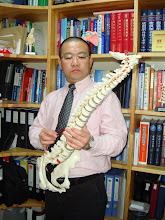THE PRIMARY RESEARCH ON REPAIR OF LONG BONE DEFECT USING CONSTRUCTED pDsVEGF165Red1-N1, pIRES2-BMP2-EGFP EUKARYOTIC EXPRESSIVE PLASMIDS
ABSTRACT
With the deep study of long bone defect, its treatment is from traditional methods,such as autologous bone,allograft,to bone tissue engineering and gene engineering. To date, these tissue engineered construct systems are mainly applied to animal models not to human transplantation. A critical limiting factor in many of these investigations may be the lack of a functional vascular network in the engineered tissues.Thus, it has become a critical problem how to accelerate the revascularization in the process of repair of long bone defect. Recent evidence suggests that VEGF is considered to be a key mediator in the angiogenic process required during bone repair process and remodeling. BMPs can stimulate angiogenesis through the production of VEGF by osteoblasts. Meantimes, VEGF and BMPs act synergistically to enchance both bone formation and bone healing. The main purpose of the present study is the revascularzation of long bone defect through transfecting VEGF165 and BMP2 eukaryotic expressive plasmids in vivo, which was adehered to n-HA/PA66 at first. As the same time, we used the technique of guided bone regeneration (GBR) which was guided by BME-10X collagen membrane. There are four separate parts in this study.
If you want to read the picture about abstract, please see the link:
http://haibo-spine.blog.sohu.com/109141072.html
Part 1 Construction and identification of red fluorescent protein reporter gene vector containing human vascular endothelial growth factor 165
Objective :To construct the vector that expresses the fusion protein of VEGF165 and red fluorescent protein (RFP) in mammalian cells. Methods According to the nucleotide sequence of hVEGF165, a pair of oligonucleotides was designed as primers which contained nuncleotide sequence of HindⅢ and SacⅡ restriction endonuclease at the two end respectively. The sequence encoding for hVEGF165 (573bp)without stop codn was amplified using PCR technique. The PCR product was digested with HindⅢ and SacⅡ, and cloned into the pDsRed1-N1 plasmid containing the reporter gene RFP. The recombinant plasmid pDsVEGF165Red-N1 was identified by restriction endonuclease enzyme analysis and DNA sequence analysis. Results The recombinant fusion protein expression vector was verified correctly by enzyme digestion, PCR and sequence analysis. Conclusion A red fluorescent protein reporter gene vector containing human vascular endothelial growth factor sequence has been constructed successfully.Thus providing an important and convenient tool to study intracellular localization of VEGF and therapy treatment in vivo.
If you want to read the picture about the part 4, please see the link:
http://haibo-spine.blog.sohu.com/109141791.html
Part 2 Construction and identification of the pIRES2-Enchanced Green fluorescent protein reporter gene vector carrying BMP2 Gene
Objective To construct the pIRES2-enchanced green flurescent protein(EGFP) expression vector carrying BMP2 gene in order to provide an ideal reporter gene for the expression and identify the location of portein in Vitro and Vivo. Methods The BMP2 cDNA sequence was excised using EcoR I and Xba I, and subcloned on pUC18 vector.And then the BMP2 sequence on the pUC18 plasmid was excised with Sal I again and ligated into Sal I site of pIRES2-EGFP treated by phosphorylase in sense and antisense direction.First, positive clones were selected with Sal I excising the recombinant plasmid;then the insert direction of BMP2 was proved using EcoR I、PshA I. Last the DNA sequenceing was used for the analysis of BMP2 sequence. Results The recombinant expression vector was verified correctly by enzyme digestion, sequence analysis. Conclusion A pIRES2 Green fluorescent protein reporter gene vector containing human Bone Morphogenetic Protein2 has been constructed successfully. thus providing an important and convenient tool to study intracellular localization of BMP2.
If you want to read the picture about the part 4, please see the link:
http://haibo-spine.blog.sohu.com/109141868.html








没有评论:
发表评论